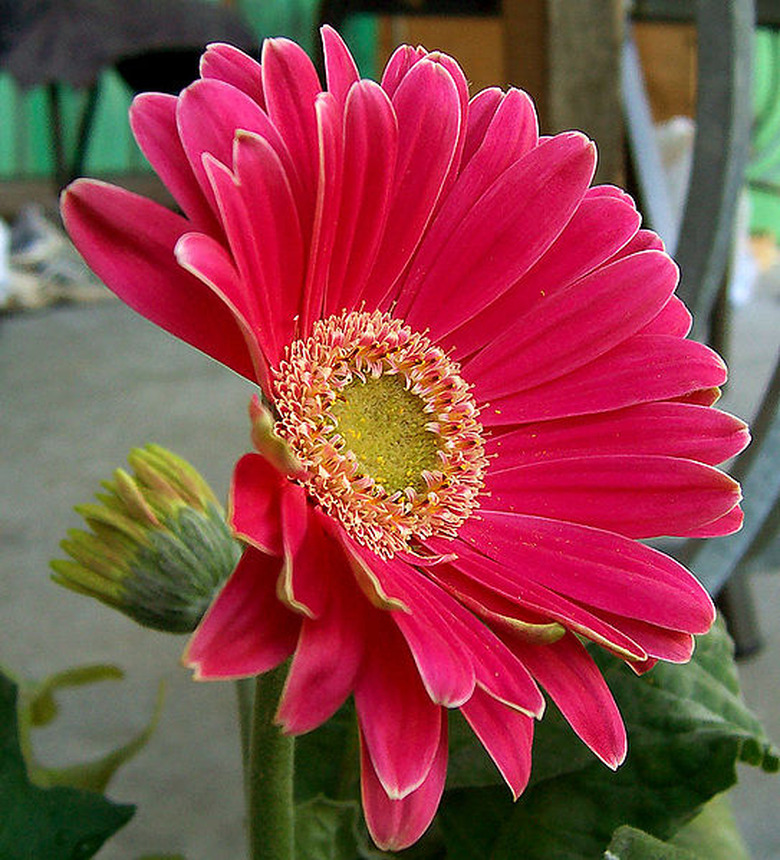Winter Care For Gerbera Daisies
Gerbera daisies, also known as African, Barberton and transvaal daisies, are perennial flowering plants that grow as annuals and indoor plants in cooler climates. Gerbera daisies produce large saucer-shaped and brightly hued blooms atop tall, slim, velvety green stems. They require large amounts of bright sunlight and prefer temperatures between 45 and 70 degrees Fahrenheit. Winter care is basic for both the indoor and outdoor grown plants.
Step 1
Plant or place your gerbera in a location with at least 6 to 8 hours of sun or dappled shade each day during the winter. If grown indoors place in a location where the plant receives 6 to 8 hours of indirect sunlight or the equivalent in artificial light each day. Choose a location that give the gerberas their ideal daily temperatures of 70 degrees during the day and 45 degrees overnight.
- Gerbera daisies, also known as African, Barberton and transvaal daisies, are perennial flowering plants that grow as annuals and indoor plants in cooler climates.
- If grown indoors place in a location where the plant receives 6 to 8 hours of indirect sunlight or the equivalent in artificial light each day.
Step 2
Water your gerberas to keep the soil evenly moist during their blooming period. When not blooming allow the soil to dry out ever so slightly between waterings to prevent crown rot. Mist gerbera foliage with tepid water if grown indoors with artificial heating to provide some atmospheric humidity for the plant.
Step 3
Fertilize gerbera daisies with a high-quality liquid indoor plant fertilizer for flowering plants such as MircacleGro or Schultz's. Apply once a month during the active growing season according to the package directions over soil that has been watered to prevent burn to the roots.
Step 4
Cut back gerbera blooms at the base of their stems for use as cut flowers or as the blooms fade. Prune away any damaged or diseased foliage by nipping the leaves off near the stem and discarding.
- Water your gerberas to keep the soil evenly moist during their blooming period.
- Apply once a month during the active growing season according to the package directions over soil that has been watered to prevent burn to the roots.
Care For Gerbera Daisies Inside
Gerbera daisies (Gerbera jamesonii) grow oversized single- or double-petal flowers in shades of yellow, orange and red. The plants are hardy outdoors in U.S. Department of Agriculture plant hardiness zones 8 through 10, but they can brighten a room indoors any time of year when grown and cared for properly. So they usually survive for about only three years as potted houseplants. Supply them with at least three to five hours of direct, morning sunlight, and provide them with afternoon shade. Provide indirect sunlight for the Gerbera daisies during winter. Maintain their room's temperature near 70 degrees Fahrenheit for their best growth and flowering. Water the daisies when the top 1/2 inch of their soil begins to dry. Indoor plants typically require watering every three to five days. Empty the water that collects in their pot's drip tray after each watering session.
- Gerbera daisies (Gerbera jamesonii) grow oversized single- or double-petal flowers in shades of yellow, orange and red.
- Provide indirect sunlight for the Gerbera daisies during winter.
Things Needed
- Flowering indoor plant fertilizer
- Spray mister bottle
- Scissors or pruning shears
